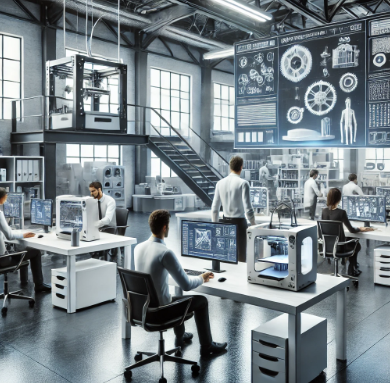Product Prototype Companies: Key to development

Turning an idea into a product that’s ready for the market involves many steps. One of the most important stages is prototyping. Product prototype companies help you build and test models of your product before mass production. By doing this, they save you time and money, ensuring that your product functions well and appeals to customers.
What Services Do Product Prototype Companies Offer?
Product prototype companies specialize in turning product concepts into functional models. They offer a wide range of services, from design to engineering and pre-production planning. Here’s a look at the key services they provide:
1. Design Services
Design is the first step in developing any product. It’s where ideas start to take shape. Designers collaborate with clients to understand their vision and translate it into workable plans. This process often involves several steps:
Concept Sketching: The design team works with you to produce rough sketches of your product. These sketches show what the product might look like and how it could function. For example, if you’re creating a new kitchen gadget, designers will create a sketch showing how it works and fits into the user’s hand.
3D CAD Modeling: Once the concept is sketched, designers move to 3D modeling using CAD software. CAD models provide an accurate, digital representation of the product, showing its dimensions, materials, and structure. For example, if you’re developing a smartphone accessory, CAD modeling can show how it connects to various devices.
2. Engineering Support
After the design is created, the engineering team steps in to ensure the product works as expected. This involves testing the product’s structure and ensuring it’s ready for production. Engineering support includes:
Material Selection: Engineers select materials that best suit the product’s purpose. For example, if you’re designing a wearable fitness tracker, engineers will choose materials that can handle sweat and movement without breaking down.
Structural Testing: Engineering teams also test the product’s durability. They check if it can withstand everyday use, from drops and impacts to exposure to elements like water or heat. This helps ensure that the product is built to last.
3. Rapid Prototyping Methods
Prototyping allows you to test your product before mass production. There are many ways to create prototypes quickly, and product prototype companies offer several advanced techniques:
3D Printing: One of the fastest ways to create a prototype is through 3D printing. This method builds the product layer by layer using materials like plastic or metal. It’s commonly used for creating early-stage prototypes that need to be tested quickly. For example, 3D printing is often used to create models for gadgets, toys, or even medical devices.
CNC Machining: CNC machining cuts away material to shape your product. It’s great for products that need to be made from metal or other durable materials. This method is often used for creating parts of machines, tools, or even car components.
Injection Molding: If you need a prototype that closely resembles the final product, injection molding is ideal. This method involves injecting molten material into a mold to create complex shapes. It’s frequently used in consumer products, like kitchen utensils or medical equipment.
4. Testing and Refinement
Prototypes are rarely perfect on the first try. After the first model is built, testing begins. This is where you can see how your product works in real life. Some examples of testing include:
Functional Testing: Does the product do what it’s supposed to do? For example, if you’re developing a wearable device, testing might involve checking its battery life, water resistance, and fit.
User Experience Testing: Does the product feel good to use? Feedback from potential users helps you understand if the product is easy to handle or if there are features that need improvement. For example, user testing for a kitchen tool might reveal that the handle needs to be more comfortable.
5. Pre-Production Planning
Once the prototype is finalized, it’s time to plan for mass production. This stage involves preparing for manufacturing and ensuring everything is ready to go. Product prototype companies help with:
Tooling and Molds: Creating the molds and tools needed to produce your product at scale. For example, if you’re making plastic parts, you’ll need custom molds to shape them during production.
Supply Chain Management: Helping you source the materials needed for production. Companies work to find reliable suppliers that offer quality materials at competitive prices.
Why One Stop Inventing Stands Out
At One Stop Inventing, we provide all the services needed to take your idea from concept to market. Our team specializes in design, engineering, and rapid prototyping to ensure your product is fully developed and tested. With our expertise and advanced tools, we’ve helped many inventors and businesses create market-ready products quickly and efficiently. Whether you’re developing a tech gadget or a consumer product, One Stop Inventing can bring your ideas to life with precision and creativity.
